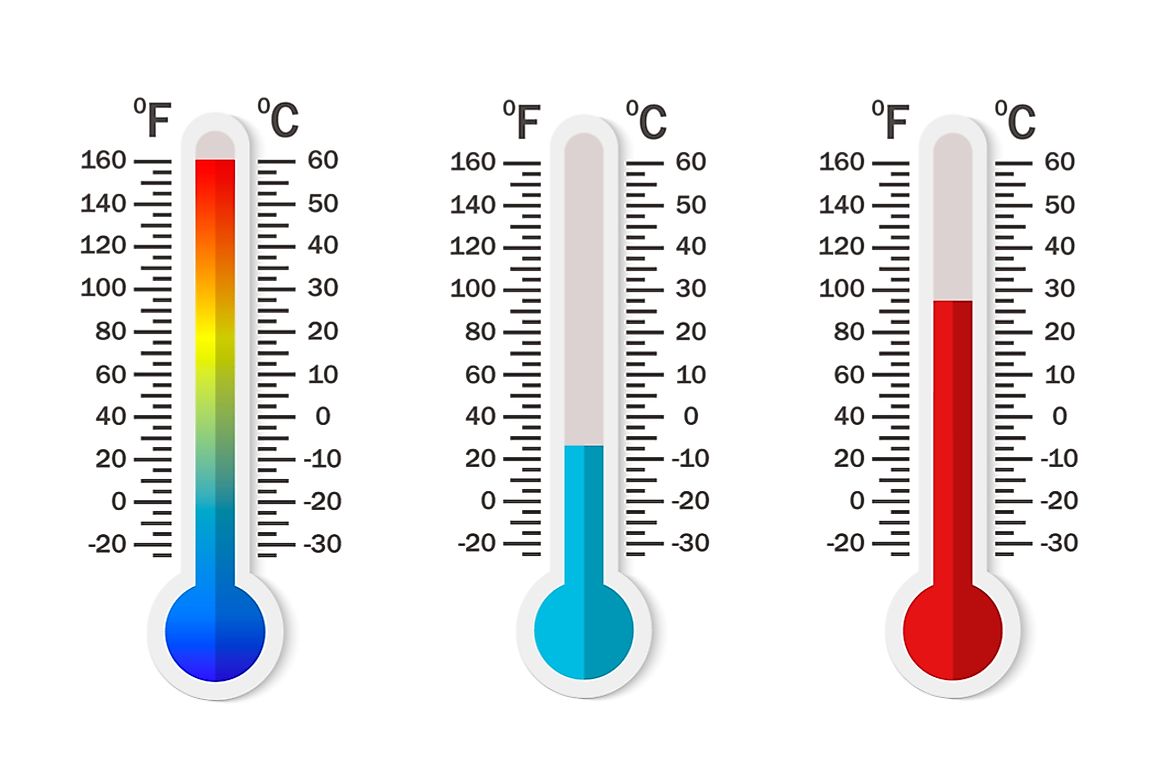Have you ever been on a trip, enjoying the beautiful weather, and wondered what the temperature in Celsius actually feels like in Fahrenheit? Or perhaps you’re planning a trip and need to pack the right clothes based on the temperature. Celsius and Fahrenheit are both temperature scales commonly used around the world, but understanding the conversion between them can be a bit tricky. Today, we’re going to dive into the world of temperature conversions, specifically focusing on how to convert 22 degrees Celsius to Fahrenheit. We’ll explore the logic behind the conversion, provide practical examples, and discuss the significance of this temperature in different contexts.

Image: www.worldatlas.com
Understanding the Celsius to Fahrenheit Conversion
Celsius and Fahrenheit are two different temperature scales, each with its own unique history and application. The Celsius scale, also known as the centigrade scale, is based on the freezing and boiling points of water, with 0 degrees Celsius representing the freezing point and 100 degrees Celsius representing the boiling point. On the other hand, the Fahrenheit scale is based on a different set of reference points, making it somewhat more complex.
To convert Celsius to Fahrenheit, we use a simple formula:
Fahrenheit = (Celsius x 9/5) + 32
Let’s break down this formula:
1. Multiply Celsius by 9/5: This step essentially adjusts the Celsius temperature to a scale that is closer to Fahrenheit.
2. Add 32: This step accounts for the difference in the zero points of the two scales. Fahrenheit starts at 32 degrees, while Celsius starts at 0 degrees. Adding 32 shifts the Celsius temperature to the Fahrenheit scale.
Converting 22 Degrees Celsius to Fahrenheit
Now, let’s apply the formula to convert 22 degrees Celsius to Fahrenheit:
Fahrenheit = (22 x 9/5) + 32
Fahrenheit = 39.6 + 32
Fahrenheit = 71.6 degrees
Therefore, 22 degrees Celsius is equivalent to 71.6 degrees Fahrenheit.
The Significance of 22 Degrees Celsius
22 degrees Celsius represents a comfortable and pleasant temperature for many people. It’s often considered a spring-like temperature, perfect for outdoor activities, picnics, and casual attire. In many parts of the world, 22 degrees Celsius is a common daytime temperature during the shoulder seasons, spring and fall.
Here are some examples of how 22 degrees Celsius might feel in different contexts:
1. Outdoor activities: 22 degrees Celsius is perfect for a light jog, cycling, or hiking without overheating.
2. Clothing: A light jacket or sweater would be comfortable at this temperature.
3. Indoor comfort: This temperature is often considered ideal for indoor spaces, providing a sense of warmth and comfort.

Image: www.wikihow.com
Tips for Remembering the Conversion
Converting Celsius to Fahrenheit can be a challenge, especially if you don’t use it regularly. Here are some tips to help you remember the formula and make the conversion easier:
1. Use Online Converters: There are numerous online temperature converters available with a simple search. These tools are quick, accurate, and can save you the hassle of remembering the formula.
-
Create a Cheat Sheet: Write down the formula and some common Celsius to Fahrenheit conversions on a notecard or a sheet of paper. Keep this sheet handy for quick reference when needed.
-
Practice: The more you practice the conversion, the easier it will become. Start by converting simple temperatures like 10 degrees Celsius or 20 degrees Celsius to Fahrenheit. As you get comfortable, move on to more complex temperatures.
-
Use Visual Aids: Create a visual representation of the temperature scales. This could be a simple chart or a diagram that shows the relationships between Celsius and Fahrenheit. Visual aids can be more engaging and easier to remember than just memorizing formulas.
FAQ
Here are some frequently asked questions about converting Celsius to Fahrenheit:
- Q: Why are there two different temperature scales?
- A: Both Celsius and Fahrenheit have long histories and were developed to meet specific needs. Celsius is widely used in science and most parts of the world, while Fahrenheit remains more prevalent in the United States.
- Q: What is the temperature difference between Celsius and Fahrenheit?
- A: The difference between Celsius and Fahrenheit varies depending on the temperature. However, as a general rule of thumb, 1 degree Celsius is approximately equal to 1.8 degrees Fahrenheit.
- Q: Is it easier to convert Celsius to Fahrenheit or Fahrenheit to Celsius?
- A: The conversion formula for Fahrenheit to Celsius is slightly more complicated. It involves subtracting 32, then multiplying by 5/9.
- Q: Why is it important to know how to convert Celsius to Fahrenheit?
- A: Understanding temperature conversions is essential for various applications, including travel, weather reporting, cooking, and scientific research. It allows for better communication and prevents confusion when dealing with different temperature scales.
22 Degree C To F
Conclusion
Understanding the conversion between Celsius and Fahrenheit is essential, especially in a world where we encounter both scales daily. By using the formula, exploring examples, and employing the tips and tricks discussed above, you can confidently convert Celsius to Fahrenheit and better understand temperature measurements across different contexts. Whether you’re planning a trip, checking the weather forecast, or simply engaging in everyday conversations about temperature, this knowledge can come in handy.
Are you interested in learning more about temperature conversions or other related concepts? Let us know in the comments below!



/GettyImages-173599369-58ad68f83df78c345b829dfc.jpg?w=740&resize=740,414&ssl=1)


